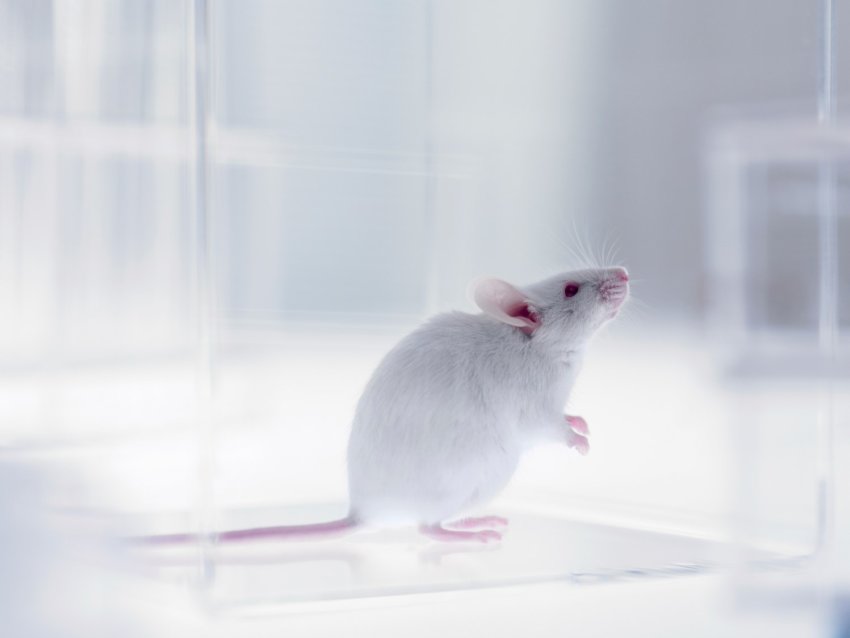
Scientists create first mouse model with complete, functional human immune system - UT Health San Antonio
Written by Claire Kowalick A breakthrough for biomedical research promises new insight into immunotherapy development and disease modeling. Scientists at The University of Texas Health Science Center at San Antonio have created a humanized mouse model with a human immune system and a human-like...
 news.uthscsa.edu
news.uthscsa.edu
Scientists create first mouse model with complete, functional human immune system
Posted on July 5, 2024 at 3:21 pm.Shared by Steven Lee

Written by Claire Kowalick
A breakthrough for biomedical research promises new insight into immunotherapy development and disease modeling. Scientists at The University of Texas Health Science Center at San Antonio have created a humanized mouse model with a human immune system and a human-like gut microbiome that is capable of mounting specific antibody responses.
The scientists were led by Paolo Casali, MD, University of Texas Ashbel Smith Professor and Distinguished Research Professor, Department of Microbiology, Immunology and Molecular Genetics in the Joe R. and Teresa Lozano Long School of Medicine. Casali has nearly five decades of biomedical research experience in immunology and microbiology and is a leading researcher in molecular genetics and epigenetics of the antibody response. He was a professor of immunology and director of the division of molecular immunology at Weill Cornell Medical College, New York, NY, and the founding director of the Institute for Immunology at University of California, Irvine, CA,

The aim of the multi-year project, which appears in the August 2024 issue of Nature Immunology, was to overcome limitations of currently available in vivo human models by creating a humanized mouse with a fully developed and functional human immune system.
Mice are widely used in biological and biomedical research because they are small, easy to handle, share many immune elements and biological properties with humans and are easily genetically modified. Many of the more than 1,600 immune response mouse genes, however, are incongruent with their human equivalents, resulting in divergencies or deficiencies of mice as predictors of human immune responses. This made availability of a “humanized” mouse model that faithfully reproduces human immune responses a high priority.
The first humanized mice were created in the 1980s to model human HIV infection and the human immune response to HIV. Humanized mice were, and have been created since, by injecting immunodeficient mice with human peripheral lymphocytes, hematopoietic stem cells or other human cells. Previous and current models, however, do not develop a fully functional human immune system, have a brief lifespan and do not mount efficient immune responses. This makes them unsuitable for development of in vivo human immunotherapies, human disease modeling or human vaccine development.
Casali’s team began with injecting immunodeficient NSG W41 mutant mice intracardiacally (left ventricle) with human stem cells they purified from umbilical cord blood. After a few weeks, once the graft has been established, the mice are hormonally conditioned with 17b-estradiol (E2), the most potent and abundant form of estrogen in the body. Hormonal conditioning by estrogen was prompted by previous research by Casali and others suggesting that estrogen boosts the survival of human stem cells, boosts B lymphocyte differentiation and production of antibodies to viruses and bacteria.
The resulting humanized mice, called TruHuX (for truly human, or THX), possess a fully developed and fully functional human immune system, including lymph nodes, germinal centers, thymus human epithelial cells, human T and B lymphocytes, memory B lymphocytes, and plasma cells making highly specific antibody and autoantibodies identical to those of humans.
THX mice mount mature neutralizing antibody responses to Salmonella Typhimurium and SARS-CoV-2 virus Spike S1 RBD after vaccination with Salmonella flagellin and the Pfizer COVID-19 mRNA vaccine, respectively. THX mice are also amenable to developing full-fledged systemic lupus autoimmunity after an injection of pristane, an oil that triggers an inflammatory response.
Casali said the THX mouse discovery opens the possibilities for human in vivo experimentation, for development of immunotherapeutics such as cancer checkpoint inhibitors, development of human bacterial and viral vaccines, as well as the modeling of many human diseases. He also hopes the new approach could make obsolete the use of non-human primates for immunological and microbiological biomedical research.
As prior research on the effect of estrogen and the immune system is sparse, Casali hopes this discovery prompts further research into the topic.
“By critically leveraging estrogen activity to support human stem cell and human immune cell differentiation and antibody responses, THX mice provide a platform for human immune system studies, development of human vaccines and testing of therapeutics,” Casali said.
With the THX model, the Casali lab is now investigating the in vivo human immune response to SARS-CoV-2 (COVID-19) at the systemic and local levels, and human memory B lymphocytes, the dependence on nuclear receptor RORα for their generation and the events that lead to RORα expression and dysregulation. It is also exploring epigenetic factors and mechanisms that mediate generation of human plasma cells, the cell factories that make antibodies — literally thousands per second — to bacteria, viruses or cancer cells.
“A humanized mouse that mounts mature class-switched, hypermutated and neutralizing antibody responses”
Daniel P. Chupp, Carlos E. Rivera, Yulai Zhou, Yijiang Xu, Patrick S. Ramsey, Zhenming Xu, Hong Zan, Paolo Casali
Released June 25, 2024, Published vol 25, issue 8 (August) of Nature Immunology.
A humanized mouse that mounts mature class-switched, hypermutated and neutralizing antibody responses - Nature Immunology